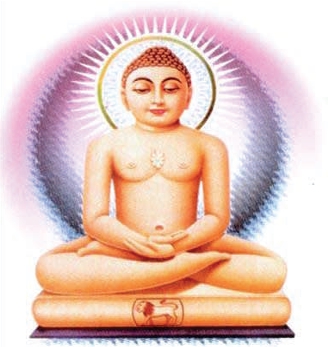
History of Digambar Terapanth
This is a small Digambara sect opposed to image-worship and following a path of inner exploration through meditation. They are also called Terahapanthis.
Banarsidass, an important lay Digambara leader in the seventeenth century, came under the influence of Kundakunda's Essence of the Doctrine, written in the second or third century CE, and the monk Nemicandra's Essence of Gomata, a Digambara doctrinal digest written in the ninth century. Nemicandra's work describes the gunasthana, the fourteen stages of quality in which the soul remains the same in essence while external actions ranging from false belief to the highest mystical experience differ due to a person's spiritual and intellectual situation. This justified Banarsidass's practice of various lay rituals, valid as preliminary stages on the spiritual path. Conventional Jain doctrine stated that the higher states of spiritual development were not possible. Banarsidass said that these states were achievable, as he had done so himself. The essence of Jainism is the mystical experience of the spiritual self. This self-realisation is attainable by lay people as well as ascetics.
This doctrine of adhyatma, mystical exploration of the inner self, was followed by the neo-Digambara Adhyatma movement. Banarsidass was its most important member. Though this movement only lasted a century after Banarsidass's death, its doctrine is still followed by the Terahapanthis.
Banarsidass (1586-1643) was born into a merchant family that may have been of the Kharatara Gaccha, a Shvetambara sect that followed the texts rather than image-worship (see Kharatara Gaccha). Though he studied briefly with a Shvetambara monk, he was an amorous youth, then he became a pious layman and in his thirties was attracted to forms of lay ritual.
Losing interest in trade, in 1623 he associated with the Adhyatma movement for inner exploration, formed by a group of Agra merchants. His encounter with Kundakunda caused a crisis of faith and a gradual spiritual transformation. He gave up ritual and every conventional precept, explaining how temple services involved a high degree of himsa, violence, in offering flowers, fruit, and sweets.
During this collapse of his outer life he even pretended in private with friends to be naked Digambara monks. But with the influence of Nemicandra he found spiritual harmony and self-realisation, from which basis he practised lay rituals. Banarsidass is the best early tendency within Jainism for laymen to conduct their own spiritual life without ascetic influence.
Symbols: | Jain rituals of image-worshipping are rejected and replaced by lay rituals of internal worship in the form of meditation. |
Adherents: | Small numbers in south-west India in the states of Maharashtra and Karnataka. |
Main Centre: | Sravana Belgola, Karnataka, India. |